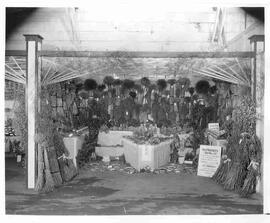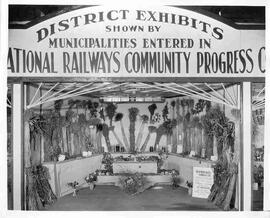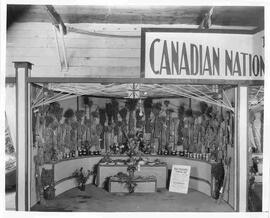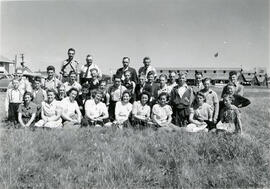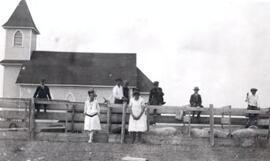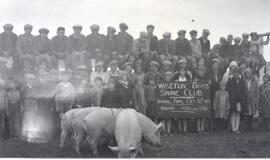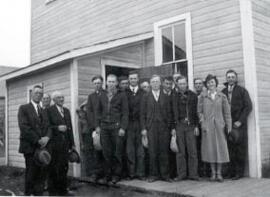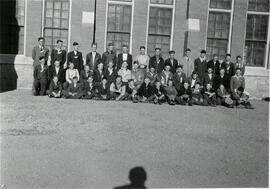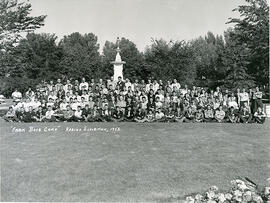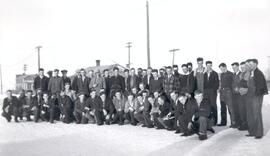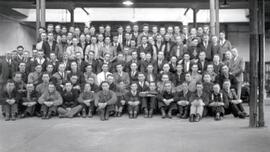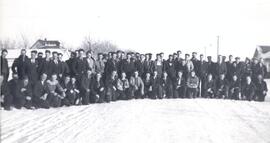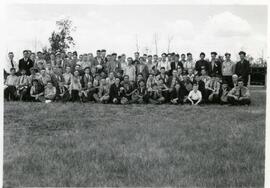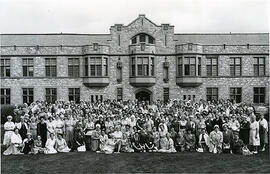Participants of the Homemakers' convention gather in the Bowl in front of the Administration Building.
Bio/Historical Note: The Homemakers' Clubs of Saskatchewan were created at a "special conference for women" initiated by the University of Saskatchewan in 1911. The objectives as stated in the constitution, were "to promote the interests of the home and the community". It was organized virtually as part of the university. The director of Agricultural Extension, F.H. Auld, was the ex officio secretary and managing director until 1913, when these duties fell to the newly appointed director of Women's Work, Abigail DeLury. From that time until reorganization in 1952, women's extension remained as a separate unit, reporting directly to the president of the university. After 1952, its work was still carried on independently, but with a greater degree of integration with agricultural and adult education services. Unique in Canada was the Club's official association with the University, which provided the provincial secretary, secretarial staff, and extension department resources to aid the development of the club and its programs. In 1971, the name was changed to the Saskatchewan Women's Institute and the University reduced its role to supplying free office space on campus.



